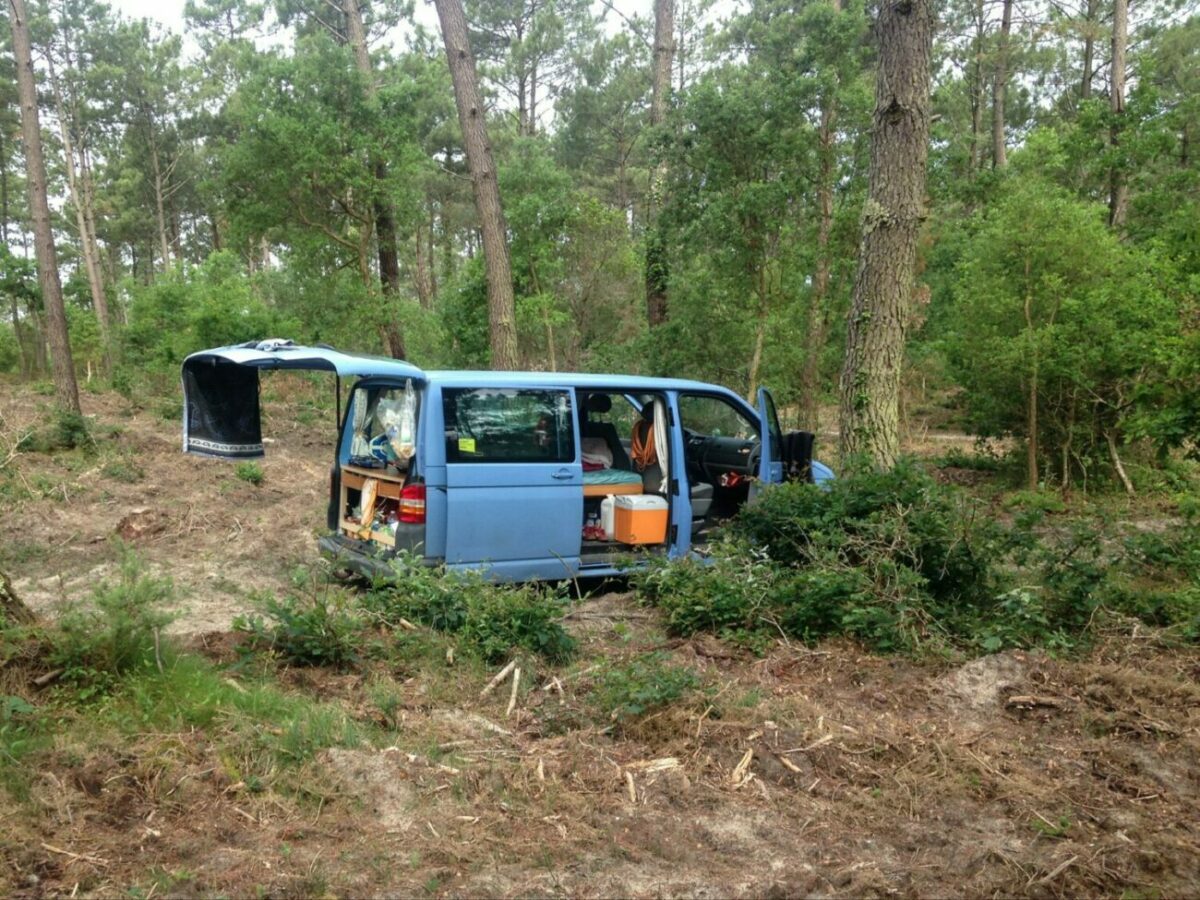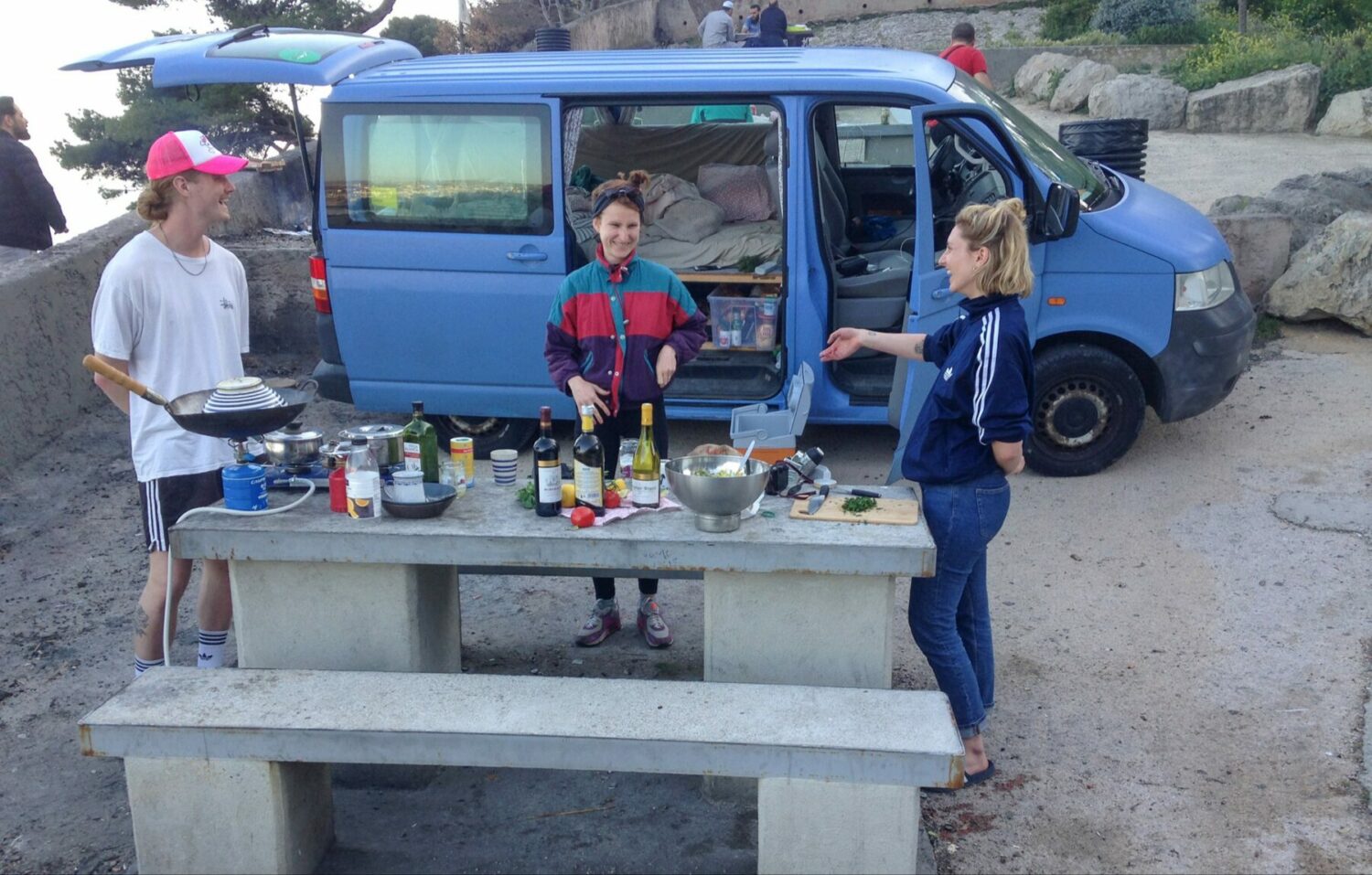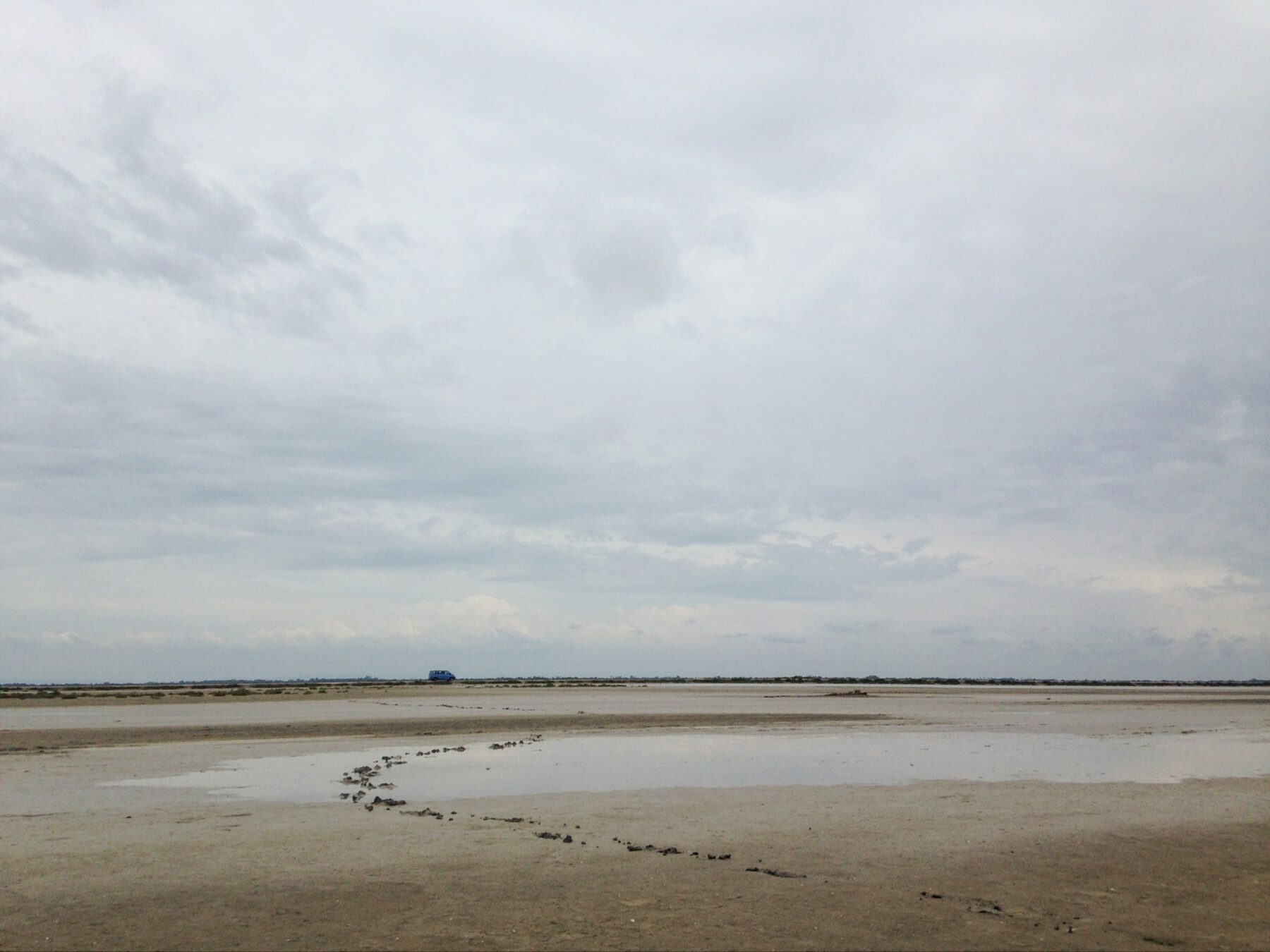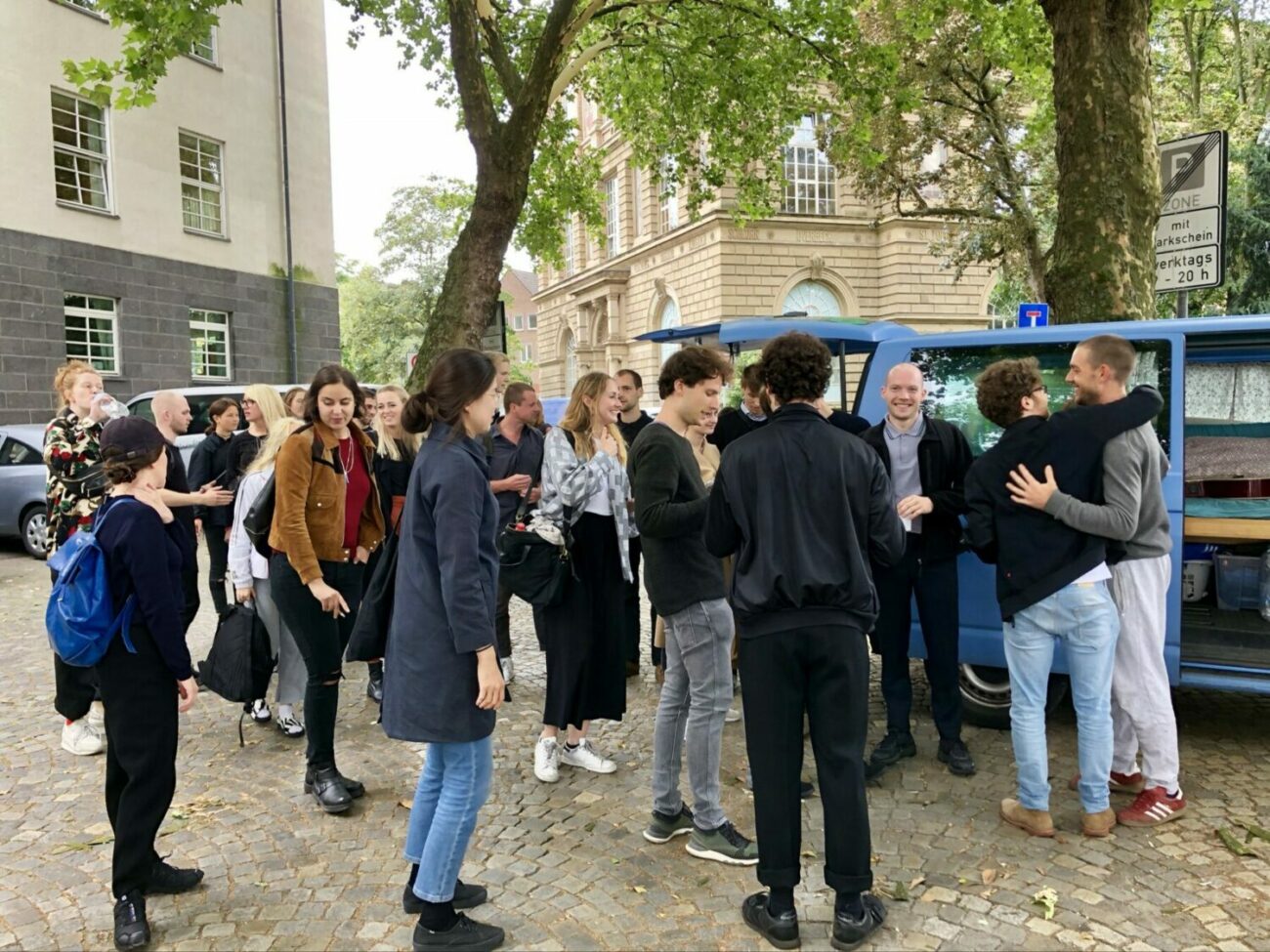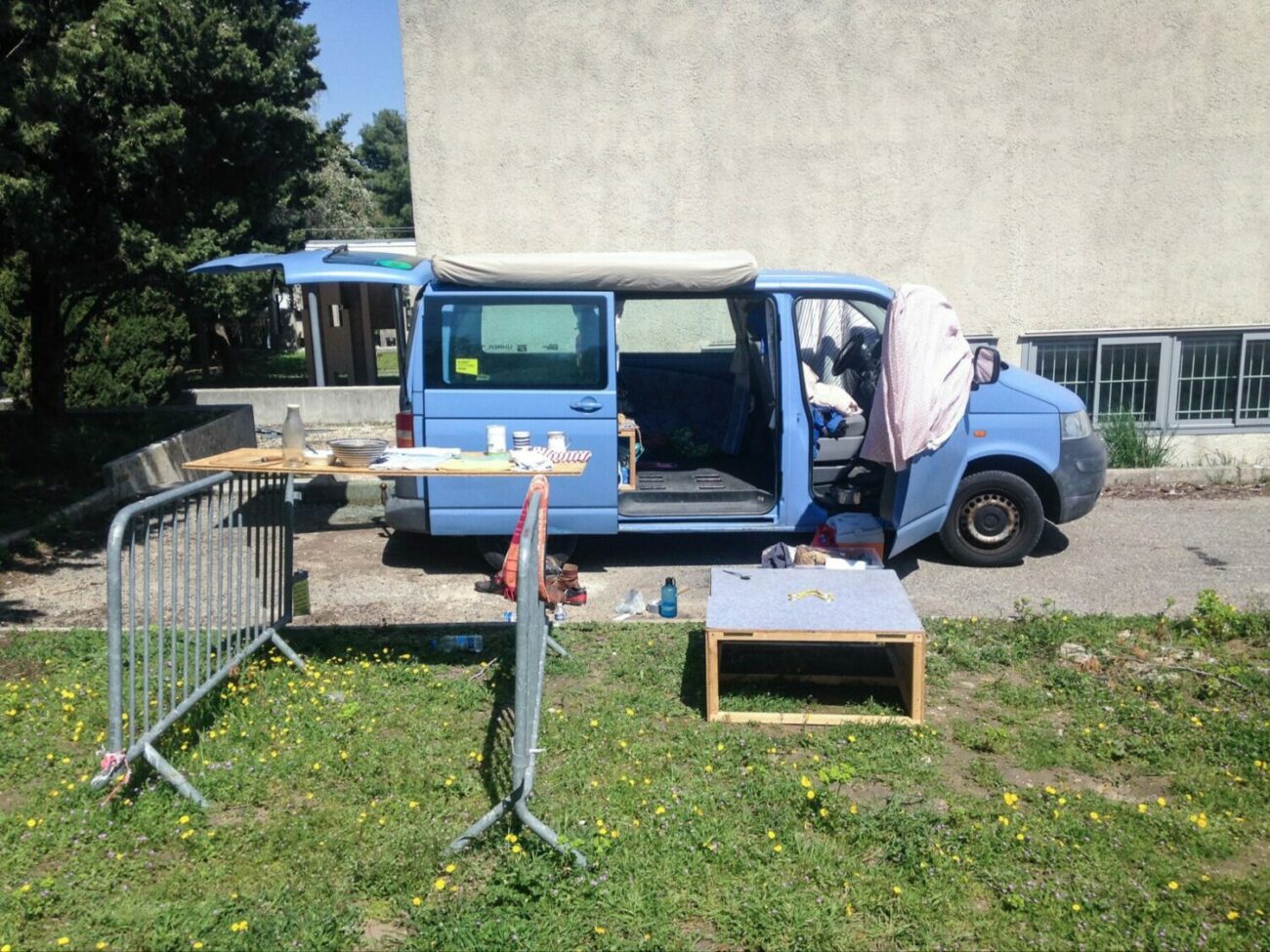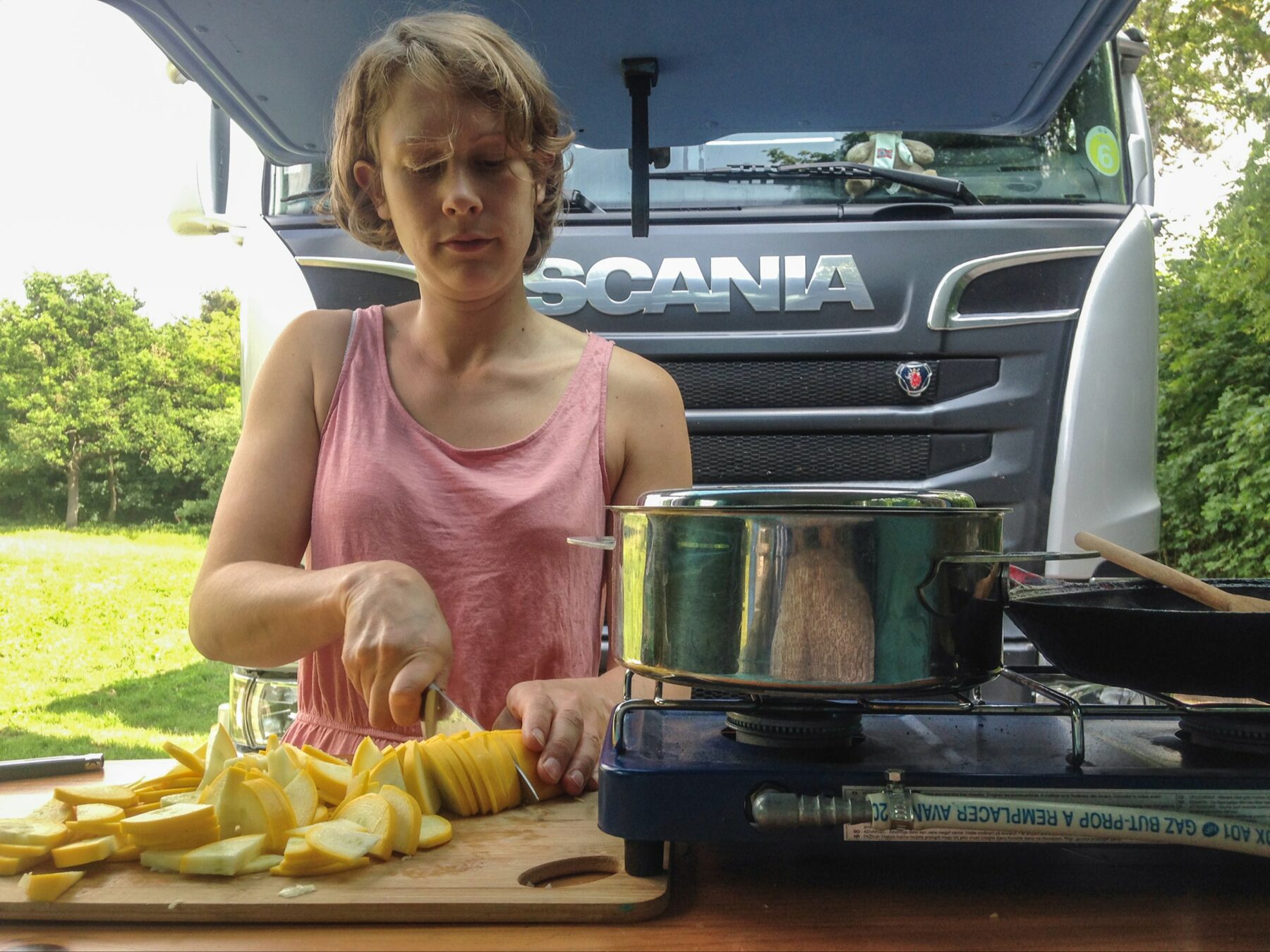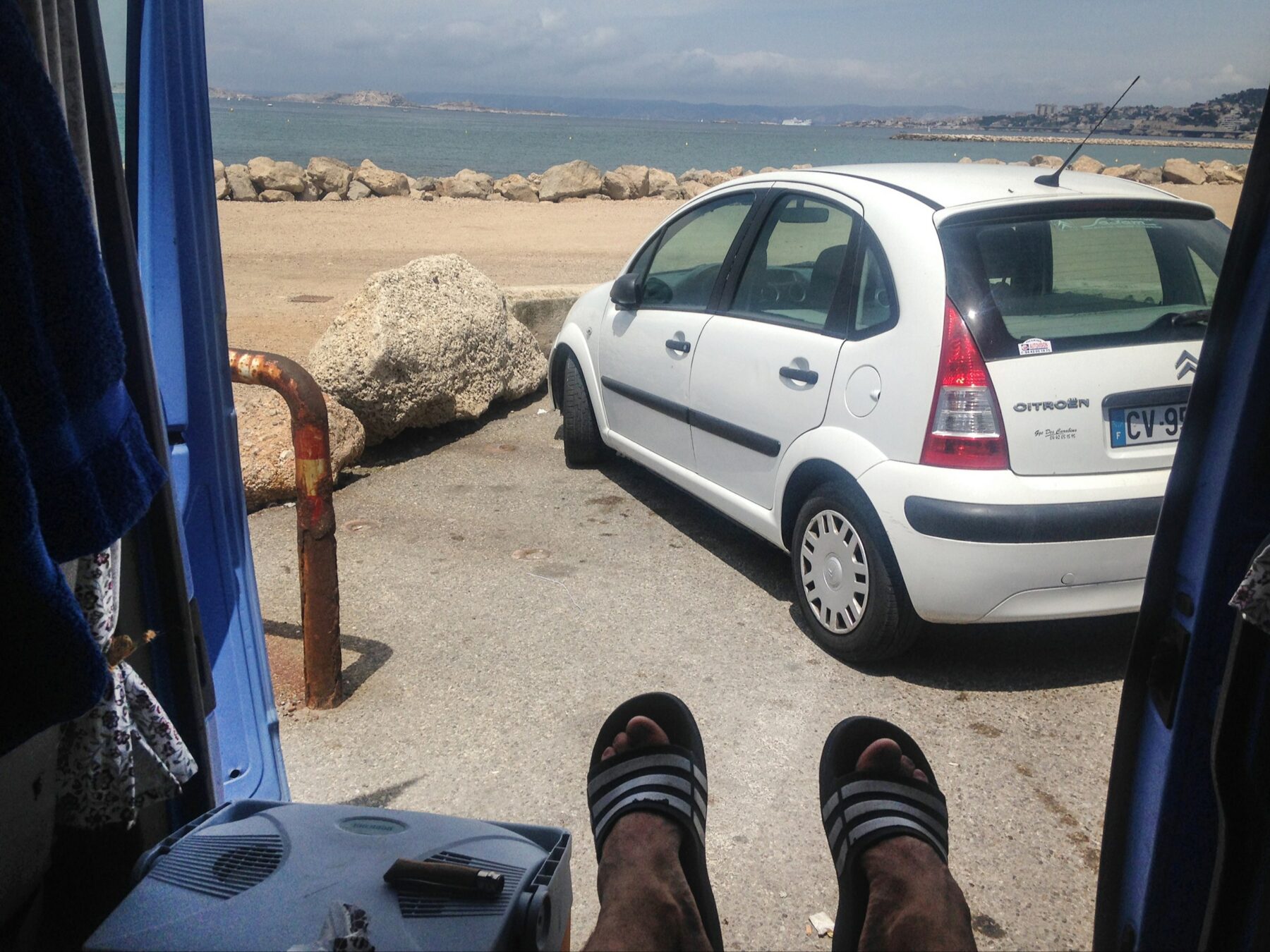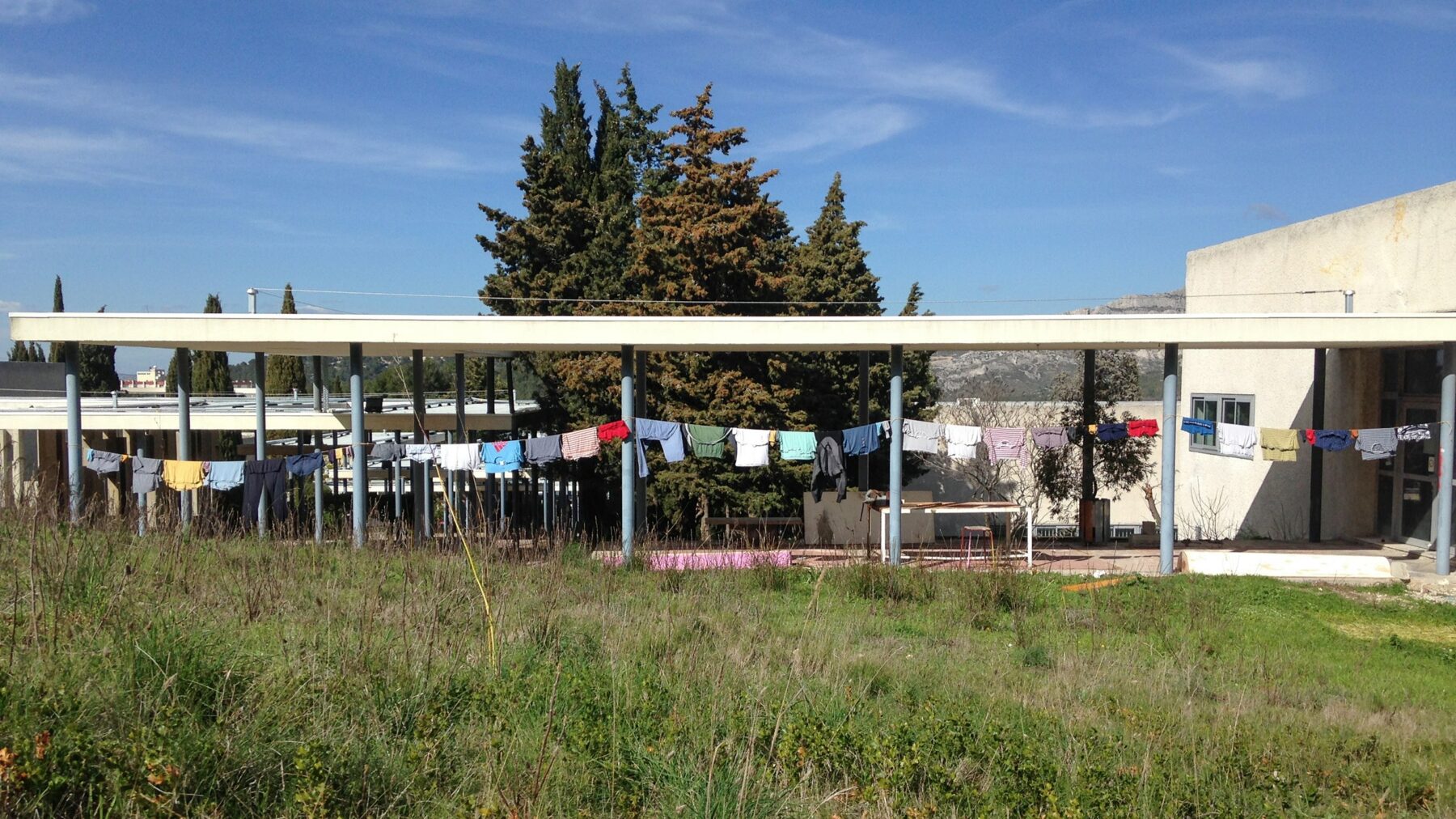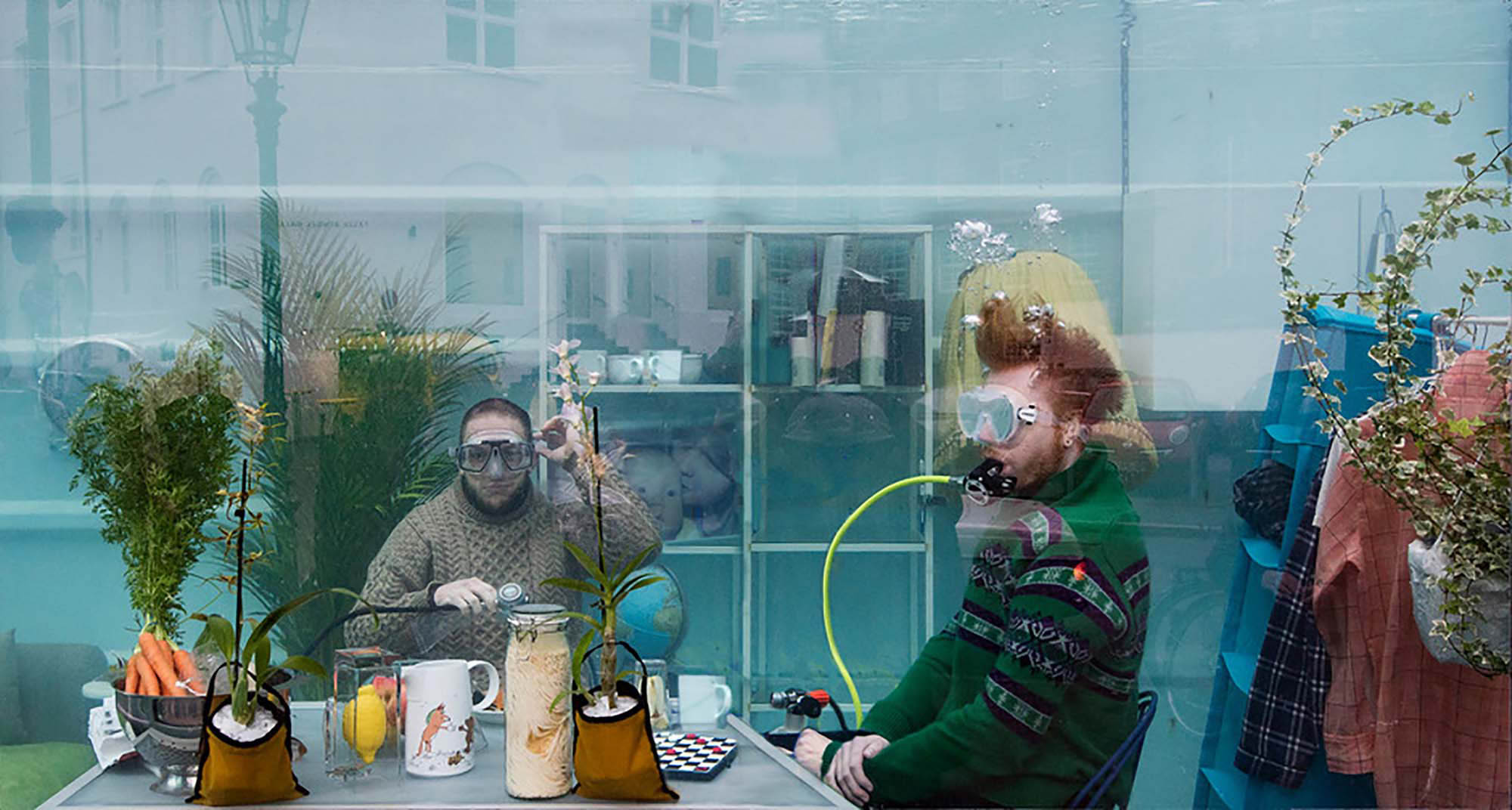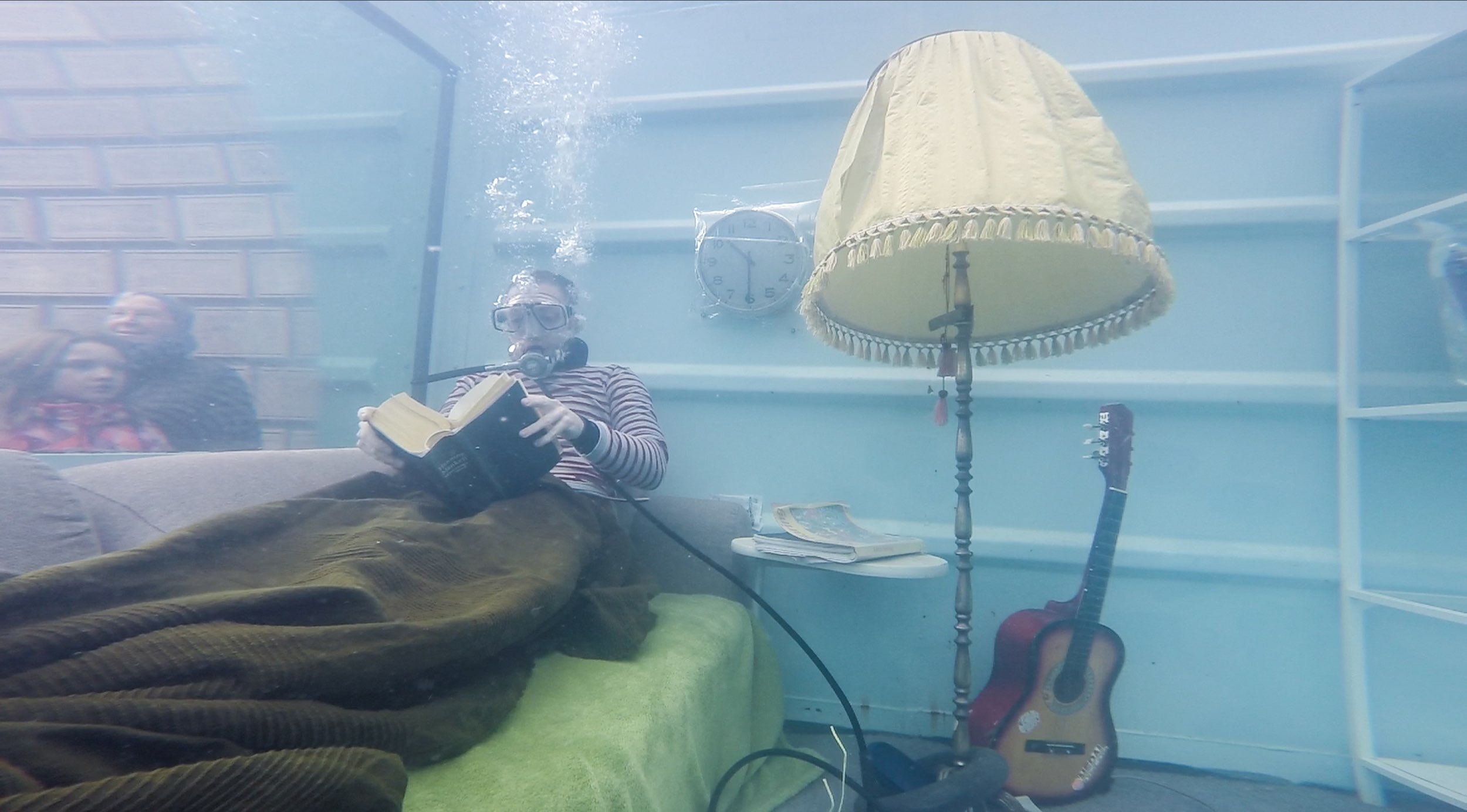abdriften – zielloses Reisen (unvollendet) /drift – aimless travel (unfinished) in public space in Germany / France
Research project for artistic-performative visibility and alternative time structures in the mode of undirected travel, without defined location, 2018
read more ⟶
Am I in the right place? Based on which parameters do I actually get to the next location? What is behind this next corner of a house? Where does the yellow sign at the crossroads lead to? What is behind this mountain?
Without incentive, it is necessary to stay and wait. Wherever. Often a parking lot in the middle of nowhere. And then?
How do you actually get involved in a place? Within a few minutes the first insects come and check you out. A mini fly buzzes around you. Does it pass on information? Here and there there is a leftover food on the back seat.
Fellow passenger Janosch, who had set up his spider’s web at the top right corner on the inside of the windshield, kept checking that I’m not driving too fast. He was apparently happy about the different flies from the different regions – sometimes a mosquito from the Mediterranean Provence, sometimes a Rhineland-Düsseldorf Mosquito, sometimes a typical fly of a rest stop. He might not have survived the one hot day in the car. At least he hasn’t been on the bus since then. Hopefully he found a gap and just moved out. Enough travelling around with the blue bus. I wonder where he lives now?
Sometimes right-left-right-left etc. for a day, sometimes at every intersection whether right-left, straight ahead or back, but such minimalist 1960s constructions are fortunately simply no longer up to date. Who benefits from that? Only frustration. Suddenly you get stuck in a soap and can’t get out. Back and forth and back and forth – the only consolation the ever-changing passers-by who keep changing the place. But what’s the point? Rather break off the attempt that was already doomed to failure and look for more complex ways of moving?
Suddenly there is a red shimmering slope at the back – a poppy field. A red spot in the landscape – that would be something for Katharina Grosse, wouldn’t it? Let’s go there and stop for a moment?
Here and there the conversations with resting truck drivers, strolling homeless people, waiting fugitives, busy pensioners on the park bench, on the quay with a view of the burning sea, on the dirty resting place or abandoned market place: Like a parallel world with a different time structure and a strikingly different speed. Most of them rush by and are only visible like shadows. Others are in the same universe – you see yourself sharply and clearly through the frantic rush and exchange open looks.
Here and there you will be contacted and asked. It could hardly be easier to make a way. Just go directly there. Time, place, relevance and involvement are then given until this structure dissolves again at some point and the question arises again by itself. Where to go?
The project of the nomadic-performative journey, which is funded by the Kunststiftung NRW, is based on the permanent space-time interrogation and the mode of strolling. It began when Tomas Kleiner gave up his apartment in Düsseldorf in February 2018, moved into a minibus with all his belongings, and from then on was constantly in the mode of potential departure, but without wanting to submerge or disappear. On the contrary.
Duration, outcome and artistic result were – and still are – open.
Thus, Tomas Kleiner continued his subtle performative practice of the previous works of getting involved in everyday conversations, making phone calls, writing e-mails and postcards, and occasionally leaving online posts on Facebook and Instagram, which thus at least fragmentarily refer to his artistic exploration, but deny himself a uniformly representative visibility for an undefined public.
A further reappraisal of the resulting material is still in progress.
Just get in touch to find out more – every contact is welcome!
Unterwasserlebensentwurf / scenario of an underwater life, in public space, Düsseldorf
7 day continuous performative live installation in collaboration with Marco Biermann, Düsseldorf, 2018
read more ⟶
For one week, “Unterwasserlebensentwurf” (Scenario of a Underwaterlife) by the two artists Marco Biermann and Tomas Kleiner, was on display as part of the Düsseldorf Akademie Rundgang 2018.
The performative action of the actors and the respective setting are always subject to a strict selection, because the means of design of the two artists are everyday, completely unspectacular activities, which often stand in contrast to the associated behavioral patterns of the chosen spaces. The play with the choreography of everyday life, and above all its contextual shift, not only triggers moments of irritation, but also fires up the artistic discourse on the interweaving of private and public, museum and profane space in a special way. Socially established lines of demarcation are broken up, private everyday life such as sleeping, reading, eating, brushing teeth, brushing or washing laundry becomes public.
For „Scenario of a Underwaterlife“ (Unterwasserlebensentwurf) Biermann and Kleiner placed a 12 square meter diving container filled with 26,000 liters of water next to the entrance of the academy. Equipped with compressed air bottles and weight belts, the two of them took turns floating in street clothes in front of the public in a self-staged setting between sofa, floor lamp, refrigerator and clotheshorse during the opening hours of the tour and went about their everyday activities.
The setting was reminiscent of historical peep-box stages of the 19th century, even though the ‘play’ shown here consisted of seemingly trivial everyday sequences. However, the visualization of ‘everyday life’ in a diving container once again made it clear how contextual shifts of place and action change our perception, as the most banal activities became a balancing act under the modified framework conditions. It was not only the suspension of gravity and the constant uplift that made every activity, no matter how small, a game of vabanque, but above all the supply of breathing air and the preservation of the heat balance that made the apparent normality of everyday activity difficult.
Even if the staging of the everyday itself is not new, Biermann and Kleiner always surprise with the way they present themselves, for both artists create an exciting antagonism simply by choosing the respective exhibition site, which makes the ‘non-events’ of life, the ‘blind spots of normality’ visible and turns the viewer into a devout participant.
Text excerpt by Dr. Astrid Legge, 2018
The project was kindly sponsored by Provinzial Versicherungenmore information and press articles:
FAZ – Leben unter Wasser / PDF ⟶
NRZ – Kunstakademie Rundgang / PDF ⟶
BILD – Studenten leben unter Wasser / PDF ⟶
theycallitkleinparis – Tomas Kleiner im Interview / PDF ⟶
Ecns – Art students show life underwater / PDF ⟶
WELT – Alltag unter Wasser / PDF ⟶
